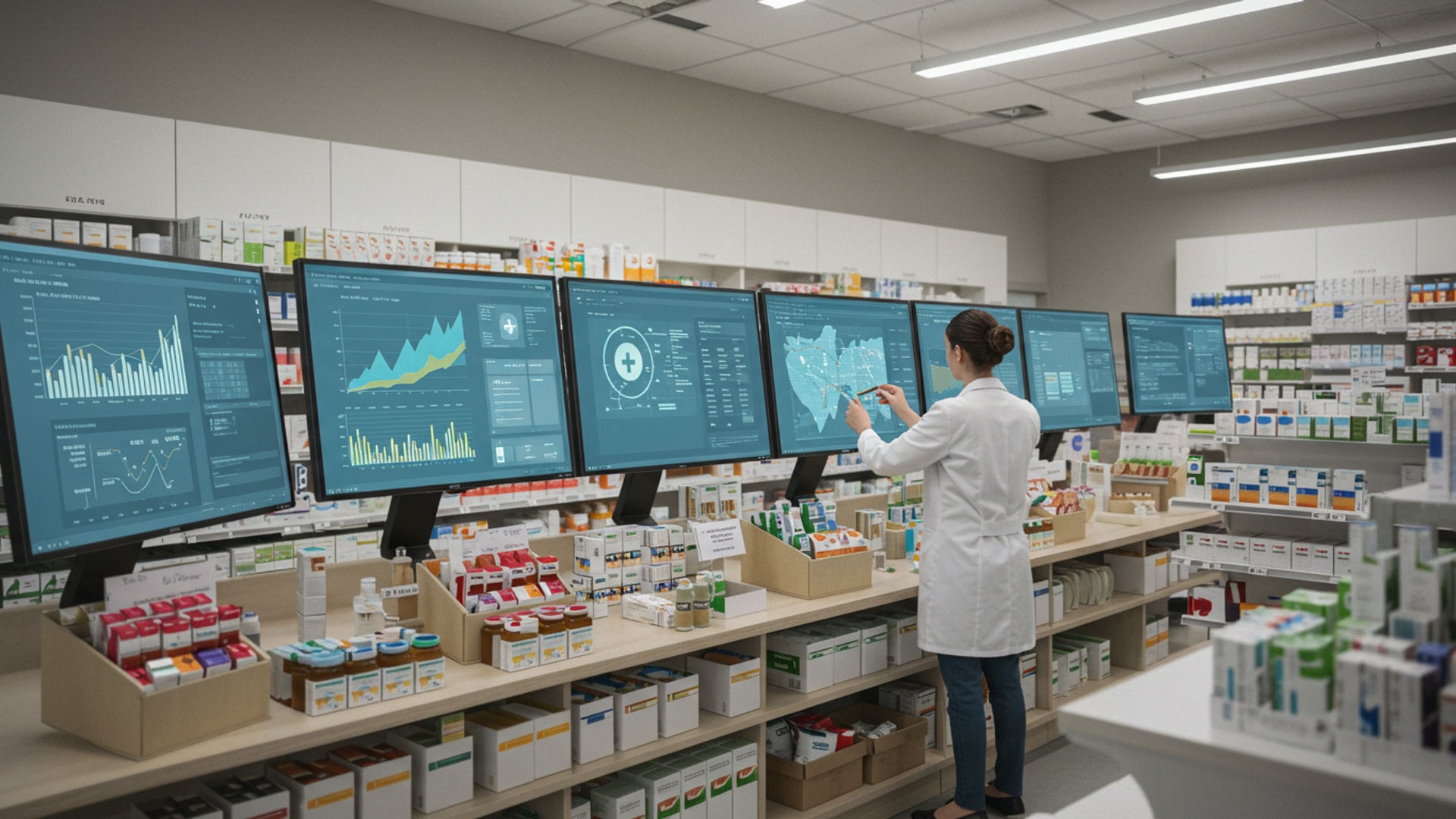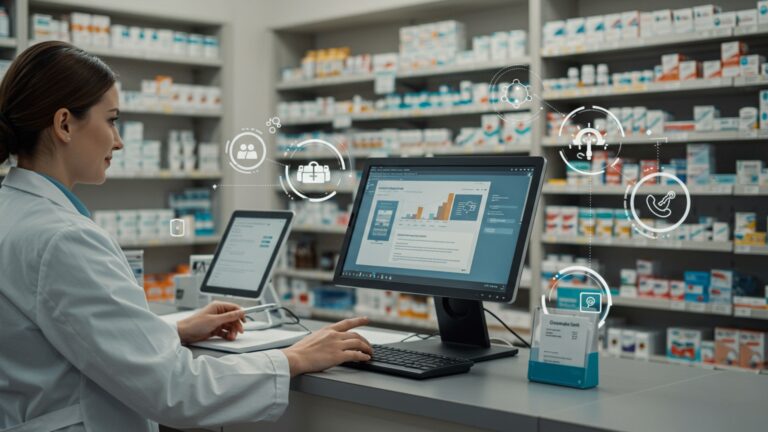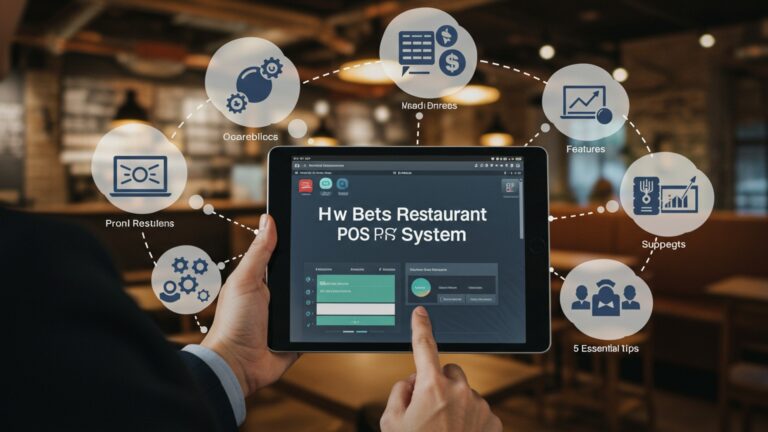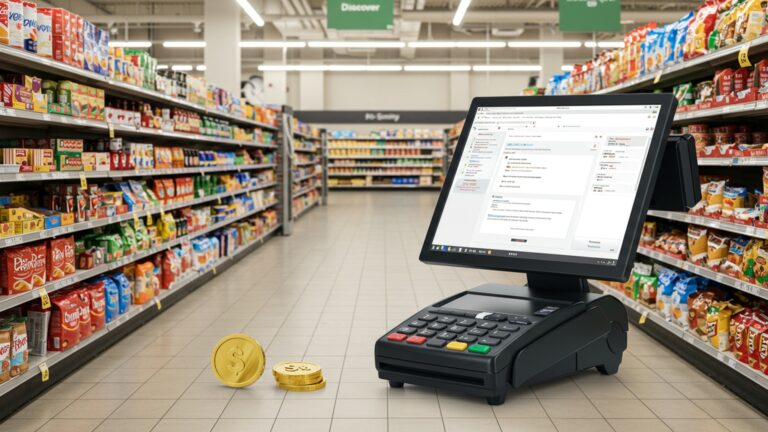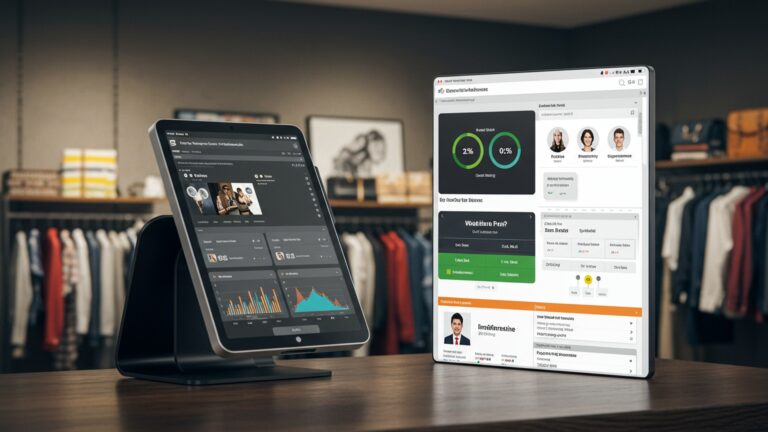7 Smart Strategies to Optimize Pharmacy Inventory with Management Software
Pharmacies today grapple with an intricate balancing act: ensuring critical medications are always in stock while minimizing waste from overstocking or expiry. The days of manual spreadsheets and reactive ordering are unequivocally over, especially with volatile supply chains and the surging demand for specialized drugs like GLP-1 agonists. Modern pharmacy inventory management software directly addresses these complexities, transforming operations from a cost center into a strategic advantage. It empowers pharmacies to leverage real-time data for precise demand forecasting, optimize par levels dynamically. proactively manage expiry dates, thereby preventing revenue loss and enhancing patient safety. This digital transformation is no longer optional; it is essential for maintaining profitability and delivering consistent patient care in a highly competitive and regulated environment.
Understanding the Power of Pharmacy Inventory Management Software
In the fast-paced world of modern healthcare, efficient pharmacy operations are paramount. At the heart of this efficiency lies robust inventory management. Gone are the days of manual stock counts and guesswork. Today, advanced pharmacy inventory management software is transforming how pharmacies operate, ensuring medications are available when needed, waste is minimized. profitability is maximized. This specialized software is an integrated system designed to track, manage. optimize the entire lifecycle of pharmaceutical products within a pharmacy, from procurement to dispensing. It leverages data analytics, automation. real-time visibility to streamline what was once a cumbersome and error-prone process. Let’s delve into seven smart strategies that leverage this powerful technology.
1. Predictive Demand Forecasting for Optimal Stock Levels
One of the most significant challenges for any pharmacy is predicting patient demand accurately. Overstocking leads to expired medications and wasted capital, while understocking results in missed sales, patient inconvenience. potential health risks. Modern pharmacy inventory management software addresses this by employing sophisticated algorithms for predictive demand forecasting.
-
- How it works
The software analyzes historical sales data, seasonal trends (e. g. , flu season, allergy peaks), local epidemiological data. even prescription patterns from integrated Electronic Health Records (EHRs). It can identify recurring demand cycles and anticipate future needs with remarkable accuracy.
-
- Real-world application
Imagine a pharmacy in a region experiencing an early surge in seasonal allergies. The software, having analyzed previous years’ data and current trends, might flag an impending increase in demand for antihistamines and nasal sprays, prompting a proactive reorder before shelves are empty. This prevents the common scenario of patients being turned away due to stockouts, which directly impacts patient satisfaction and loyalty.
-
- Actionable Takeaway
Utilize your software’s forecasting capabilities to adjust order quantities and timings, ensuring you have critical medications on hand without tying up excessive capital in slow-moving stock. Regularly review the forecast accuracy and fine-tune parameters as needed.
2. Automated Reordering and Supplier Management
Manual reordering is not only time-consuming but also prone to human error, leading to either forgotten orders or duplicate purchases. Pharmacy inventory management software automates this critical process, freeing up valuable staff time and reducing costly mistakes.
-
- How it works
The system allows you to set minimum and maximum stock levels (reorder points and reorder quantities) for each medication. When stock falls below the reorder point, the software can automatically generate a purchase order or alert staff to do so. It can also manage relationships with multiple suppliers, tracking their pricing, lead times. order fulfillment rates.
-
- Comparison: Manual vs. Automated Reordering
Feature Manual Reordering Automated Reordering (with Software) Time Consumption High (physical checks, manual order creation) Low (system-generated alerts/orders) Accuracy Prone to human error, oversight High (data-driven, rule-based) Stockouts/Overstocking Frequent risk due to delayed action Significantly reduced with real-time tracking Supplier Price Comparison Laborious, often overlooked Automated comparison, optimal vendor selection Staff Focus Administrative tasks Patient care, clinical services - Real-world application
- Comparison: Manual vs. Automated Reordering
A busy independent pharmacy previously spent hours each week manually checking stock and calling suppliers. After implementing pharmacy inventory management software, their reordering process became largely automated. The system now sends purchase orders to preferred vendors when stock levels hit predefined thresholds, saving approximately 10 hours per week and virtually eliminating stockouts of high-volume generic drugs.
-
- Actionable Takeaway
Configure your reorder points and quantities judiciously, considering factors like lead time and demand variability. Leverage the software to consolidate orders, negotiate better terms. streamline communication with your suppliers.
3. Proactive Expiration Date Tracking and Waste Reduction
Expired medications represent a significant financial loss and a critical safety concern. Keeping track of hundreds or thousands of different expiry dates manually is nearly impossible for even the most diligent staff. Here, pharmacy inventory management software shines.
-
- How it works
Upon receiving new stock, staff input or scan the medication’s lot number and expiration date into the system. The software then continuously monitors these dates, flagging items that are nearing expiration (e. g. , within 3-6 months). This allows pharmacies to implement a “first expiry, first out” (FEFO) strategy and proactively manage stock.
-
- Real-world application
A hospital pharmacy, dealing with a vast array of specialized and expensive medications, faced substantial losses from expired drugs. Their pharmacy inventory management software now generates daily reports of medications expiring within the next 90 days. This allows them to prioritize dispensing these items, transfer them to other departments with higher immediate demand if permissible, or initiate return processes with suppliers well in advance, drastically reducing write-offs.
-
- Actionable Takeaway
Implement robust receiving protocols to ensure all lot numbers and expiry dates are accurately entered into the software. Use the software’s reporting features to identify and manage nearing-expiration stock, minimizing waste and maximizing profitability.
4. Comprehensive Vendor Performance Analysis and Price Optimization
Managing multiple vendors and ensuring you’re getting the best value for your purchases is a complex task without the right tools. A sophisticated pharmacy inventory management software provides the data needed to make informed purchasing decisions.
-
- How it works
The software tracks every purchase, including vendor, unit cost, quantity. delivery time. Over time, it builds a robust database that allows for comparative analysis of different suppliers for the same medication. It can highlight price discrepancies, identify vendors with consistent delays, or show which suppliers offer the best overall value.
-
- Example of Software Output
Vendor Performance Report (Q3 2023) | Medication Name | Vendor A Avg Price | Vendor B Avg Price | Vendor C Avg Price | Vendor A Avg Lead Time | Vendor B Avg Lead Time | Vendor C Avg Lead Time | |-----------------|--------------------|--------------------|--------------------|------------------------|------------------------|------------------------| | Metformin 500mg | $0. 12 | $0. 11 | $0. 13 | 2 days | 3 days | 1 day | | Atorvastatin 20mg | $0. 25 | $0. 24 | $0. 26 | 3 days | 2 days | 4 days | | Amoxicillin 250mg | $0. 08 | $0. 09 | $0. 08 | 1 day | 2 days | 1 day | Recommendation: For Atorvastatin, Vendor B offers better pricing and lead time. For Metformin, Vendor B has best price but slightly longer lead time than A. -
- Actionable Takeaway
Regularly review vendor performance reports to identify opportunities for cost savings. Use this data to negotiate better pricing, consolidate orders with preferred suppliers. diversify your supplier base to mitigate risks.
5. Real-time Inventory Visibility Across Multiple Locations
For pharmacies with multiple branches or a central warehouse, maintaining accurate inventory counts across all locations is crucial. Lack of real-time visibility can lead to unnecessary inter-store transfers, stockouts at one location while another is overstocked. inefficient resource allocation. Modern pharmacy inventory management software provides a centralized view.
-
- How it works
All inventory transactions (receipts, sales, transfers, returns) are immediately updated in a central database accessible from any connected location. This means a pharmacist at one branch can quickly check the stock of a specific drug at another branch, or a central purchasing manager can see the consolidated inventory level of an entire chain.
-
- Real-world application
A small pharmacy chain with three locations often struggled with drug availability. A patient might visit one branch for a specialized medication only to find it out of stock, while another branch had ample supply. With a cloud-based pharmacy inventory management software, staff can now instantly locate the medication at a sister branch, arrange a quick transfer, or direct the patient to the correct location, significantly improving customer service and reducing lost sales.
-
- Actionable Takeaway
Leverage real-time visibility to optimize stock distribution across your network. This can reduce the need for emergency orders, minimize expired stock. improve overall patient satisfaction by ensuring medication availability.
6. Powerful Data Analytics and Reporting for Strategic Decisions
Beyond simply tracking stock, the true power of pharmacy inventory management software lies in its ability to transform raw data into actionable insights. Comprehensive reporting and analytics tools are essential for making strategic business decisions.
-
- How it works
The software collects data on every aspect of inventory: sales velocity, cost of goods sold, profit margins per item, slow-moving items, fast-moving items. inventory turnover rates. It then generates customizable reports that highlight trends, identify inefficiencies. pinpoint opportunities for improvement.
-
- Example Reports
- Sales Velocity Report
- Example Reports
Identifies which medications are selling quickly and which are stagnant, guiding purchasing decisions.
-
-
- Profitability Analysis
-
Breaks down profit margins by medication, category, or even supplier, revealing areas for margin improvement.
-
-
- Inventory Turnover Report
-
Measures how quickly inventory is sold and replaced, indicating efficiency in stock management. A low turnover rate might suggest overstocking or slow-moving items.
-
-
- Shrinkage Report
-
Helps track inventory discrepancies due to theft, damage, or errors, providing insights into potential vulnerabilities.
-
- Actionable Takeaway
Regularly review the analytical reports generated by your software. Use insights from sales velocity to adjust ordering, profitability analysis to optimize pricing. inventory turnover to refine stock levels, ultimately driving better financial performance.
7. Seamless Integration with Point-of-Sale (POS) and Electronic Health Records (EHR) Systems
The maximum benefit from pharmacy inventory management software is realized when it doesn’t operate in a silo. Integration with other core pharmacy systems creates a unified, efficient ecosystem.
-
- How it works
- POS Integration
- How it works
When a medication is dispensed and sold through the POS system, the inventory count in the management software is automatically updated in real-time. This eliminates manual adjustments and ensures accuracy between sales and stock levels. It also provides granular sales data directly to the inventory system for better forecasting.
-
-
- EHR Integration
-
Connecting with EHRs allows the inventory system to potentially anticipate demand based on new prescriptions entered by physicians, streamline prescription verification processes. even track specific patient medication histories more effectively. This creates a closed-loop system from prescription to dispensing.
-
- Real-world application
A large retail pharmacy chain integrated its pharmacy inventory management software with its POS system. Previously, inventory updates were batched overnight, leading to potential discrepancies during the day. With real-time integration, stock levels are always accurate, reducing the chances of promising a medication that is actually out of stock. Moreover, integrating with their EHR allows them to pre-allocate certain high-demand or specialized medications for patients with confirmed prescriptions, ensuring availability.
-
- Actionable Takeaway
Prioritize integrating your pharmacy inventory management software with your POS and EHR systems. This creates a synergistic environment that enhances data accuracy, improves workflow efficiency. ultimately contributes to superior patient care and operational success.
Conclusion
Embracing management software for your pharmacy inventory isn’t merely an upgrade; it’s a strategic imperative in today’s fast-paced healthcare landscape. By leveraging predictive analytics and real-time tracking, you move beyond reactive ordering to a proactive, ‘just-in-time’ model. This doesn’t just cut down on expired medications and reduce carrying costs; it frees up significant capital, allowing you to invest in patient-centric services, perhaps even expanding into specialized compounding or health screenings. My personal tip is to start small with your implementation, perhaps focusing on your fastest-moving or highest-cost items first to build confidence and refine your processes before a full rollout. It’s truly transformative to see how a well-managed system minimizes stockouts for critical medications, ensuring consistent patient care. Ultimately, the power to optimize your pharmacy’s financial health and enhance patient satisfaction lies within these smart strategies. Don’t view this as an expense. as an investment that pays dividends, securing your pharmacy’s competitive edge and future growth.
More Articles
7 Essential Benefits of a Pharmacy POS System for Your Business Growth
Learn 7 Key Features Your Pharmacy POS System Must Have
7 Key Factors Impacting Pharmacy POS System Price You Must Know
How to Choose and Use a POS System for Inventory Management in India
FAQs
Why should my pharmacy even bother with inventory management software?
It’s a game-changer! This software helps you avoid running out of crucial medications while also preventing overstocking. You’ll save money, reduce waste from expired products. free up staff time for patient care instead of manual counting.
How does the software help predict what meds I’ll need?
Great question! The software uses historical sales data, seasonal trends. even local health patterns to forecast demand. This means you can order more accurately, ensuring you have popular items when patients need them and less of what just sits on the shelf.
Can this system really help me stop meds from expiring on the shelf?
Absolutely! A key feature is expiry date tracking. The software alerts you well in advance about products nearing their expiration, allowing you to prioritize selling them, return them to suppliers if possible, or even transfer them to another branch before they become unsellable waste.
So, does it just order stuff for me automatically?
Not entirely by itself. it makes reordering super efficient. Based on predefined minimum stock levels and sales data, the software can generate suggested purchase orders. You then review and approve them, or in some cases, it can be set up for full automation if you’re comfortable with that. It definitely cuts down on manual ordering time.
Beyond just not wasting meds, how does this software save my pharmacy money?
It saves money in several ways! Besides reducing expired stock, it helps you identify slow-moving items to avoid future over-ordering, allows you to potentially negotiate better bulk deals with suppliers by showing clear demand. frees up staff time that can be redirected to revenue-generating activities or better patient service.
What kind of insights can I get from using this kind of software?
You get a ton of valuable insights! It can show you which products are your top sellers, which ones are slow movers, inventory turnover rates, supplier performance. even profit margins per product. This data empowers you to make smarter purchasing and pricing decisions.
Is it hard to get my staff on board with new software like this?
Like any new system, there’s a learning curve. modern pharmacy management software is designed to be user-friendly. Many vendors offer training and support. The long-term benefits in terms of efficiency and reduced stress usually make the initial transition well worth it for your team.

